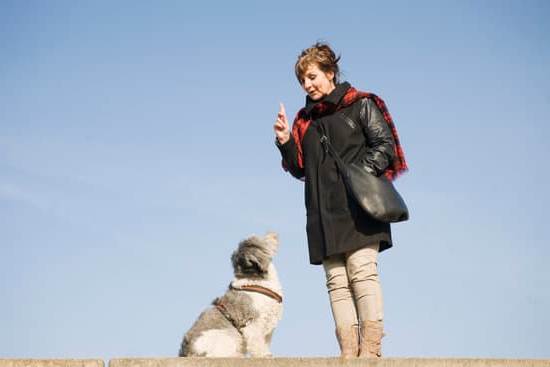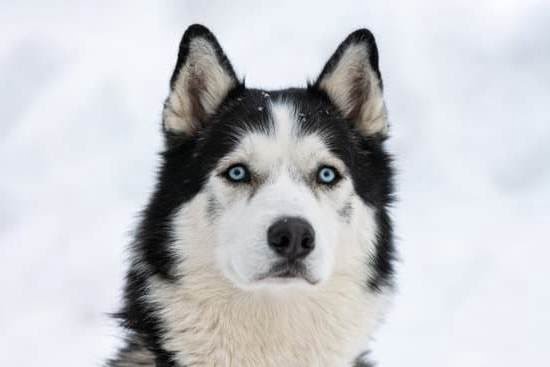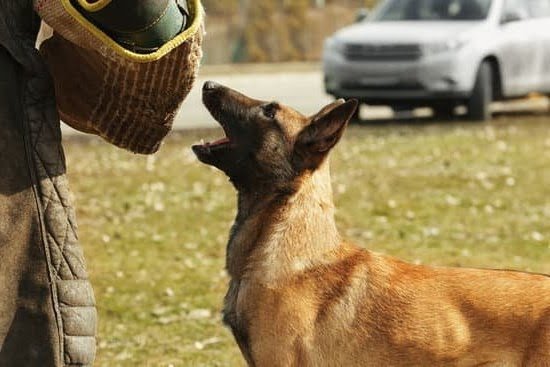Dogs and chickens may seem like an unlikely pair, but with the right training, they can coexist peacefully. In this article, we will discuss how to train a dog to leave chickens alone. Understanding the instincts of both dogs and chickens is crucial in successfully integrating them in the same space. By following the steps outlined in this guide, you can create a harmonious environment where your dog respects the presence of chickens.
Dogs have natural hunting instincts, which may trigger their prey drive when they come across small animals like chickens. It is important to train your dog to leave chickens alone not only for the safety of the birds but also for the well-being of your furry friend. Through patience, consistency, and positive reinforcement, you can teach your dog to control its impulses and behave appropriately around chickens.
Assessing your dog’s behavior towards chickens is a critical first step in the training process. By observing how your dog reacts to the presence of chickens, you can gauge its level of curiosity or aggression. Establishing boundaries and teaching your dog commands like “leave it” will help set clear expectations for acceptable behavior around chickens. Stay tuned as we delve deeper into effective strategies for training your dog to coexist peacefully with these feathered companions.
Why It Is Important to Train Your Dog to Leave Chickens Alone
Dogs have a natural instinct to chase small animals, like chickens, due to their predatory nature. This behavior can put the safety of your chickens at risk and lead to injury or even death. Training your dog to leave chickens alone is crucial not only for the well-being of your poultry but also for the harmony within your household. By teaching your dog to coexist peacefully with your chickens, you are fostering a safer environment for all involved.
One important reason to train your dog to leave chickens alone is to prevent any harm that may come to the birds. Even a playful interaction between a dog and a chicken can turn dangerous in an instant.
By setting boundaries and teaching your dog appropriate behavior around the chickens, you are minimizing the risk of injury or stress to both animals. Additionally, training your dog in this manner can also prevent any legal issues that may arise from having a dog that poses a threat to other animals.
Another reason why it’s important to train your dog not to bother chickens is to maintain peace and order on your property. Constantly having to separate a misbehaving dog from the chickens can be stressful and time-consuming.
By establishing clear expectations through training, you are creating a harmonious environment where all animals can coexist without conflict. This training not only benefits the safety of the chickens but also enhances the relationship between you and your dog by fostering trust and understanding.
| Reasons | Benefits |
|---|---|
| Prevention of harm to chickens | Ensures safety for poultry and avoids potential injuries |
| Maintaining peace on property | Fosters harmonious coexistence among all animals and reduces stress |
Assessing Your Dog’s Behavior Towards Chickens
Before beginning the training process on how to train a dog to leave chickens alone, it is crucial to first assess your dog’s behavior towards chickens. Some dogs may have a natural prey drive or herding instinct that can make them more prone to chasing or harming chickens. Observing your dog’s reactions around chickens, whether it be excitement, curiosity, or aggression, will give you insight into how much training and guidance they will need.
To assess your dog’s behavior towards chickens effectively, consider conducting controlled interactions in a safe environment. Keep your dog on a leash and closely monitor their body language and reactions when near the chickens. Look out for signs of tension, such as raised hackles, stiff posture, intense focus, or growling. These behaviors indicate that your dog may not be ready for unsupervised encounters with chickens.
Here are some key behaviors to look for when assessing your dog’s behavior towards chickens:
- Curiosity: Does your dog show an interest in the chickens without displaying any signs of aggression?
- Calmness: Does your dog remain relaxed and composed when in the presence of chickens?
- Respect: Does your dog respond well to commands and boundaries set around the chickens?
By carefully observing and assessing your dog’s behavior towards chickens, you can better tailor your training approach to address any potential challenges or concerns that may arise during the process.
Establishing Boundaries
One effective way to train a dog to leave chickens alone is by teaching them the “Leave It” command. This command can be crucial in preventing your dog from chasing, harassing, or harming chickens. To start training your dog the Leave It command, begin by holding a treat in your closed hand and allowing your dog to sniff it.
When your dog inevitably tries to get the treat out of your hand, firmly say “Leave It” and close your hand. Once your dog backs off even slightly, reward them with a different treat.
Consistency is key when teaching the Leave It command. Practice this exercise regularly with various items and gradually increase the level of distraction by introducing toys or food items that are more enticing to your dog than the first treat.
Remember to always reward your dog for complying with the command and never punish them for not getting it right immediately. With patience and repetition, your dog will learn to associate the phrase “Leave It” with backing off from potential temptations like chasing chickens.
It’s important to note that each dog is different, and some may take longer to grasp the concept of leaving chickens alone than others. Be patient with your furry companion and celebrate progress no matter how small.
Additionally, consider seeking professional help from a certified dog trainer if you encounter challenges in training your dog to leave chickens alone despite consistent efforts. By consistently practicing the Leave It command and using positive reinforcement techniques, you can successfully train your dog to peacefully coexist with chickens without any aggressive behavior towards them.
| Training Tip | Importance |
|---|---|
| Consistency is key | Reinforces learning |
| Reward good behavior | Motivates dogs |
| Be patient with progress | Every small step counts |
Using Positive Reinforcement to Encourage Good Behavior Around Chickens
Training your dog to leave chickens alone can be a challenging task, but by using positive reinforcement, you can encourage good behavior around these feathered friends. Positive reinforcement involves rewarding your dog for desired behaviors, which can help them learn quickly and effectively. Here are some tips on how to use positive reinforcement to encourage your dog to leave chickens alone:
- Utilize treats: When your dog exhibits good behavior around chickens, such as ignoring them or backing away when commanded, reward them with their favorite treats. This positive association will reinforce the desired behavior.
- Use verbal praise: Dogs love to receive praise from their owners, so make sure to shower them with positivity when they do the right thing around chickens. Use a happy tone of voice and offer lots of encouragement.
- Offer toys or playtime: If your dog shows restraint and leaves the chickens alone, engage in a fun play session or provide them with a stimulating toy as a reward. This can help redirect their focus and energy in a positive way.
Remember that consistency is key when using positive reinforcement to train your dog. Make sure to reward them every time they exhibit the desired behavior around chickens, so they understand what is expected of them. With patience and dedication, you can successfully teach your dog to respect the boundaries with chickens and create a harmonious environment for all.
Supervised Interaction
Introducing Your Dog to Chickens
When it comes to training your dog to leave chickens alone, supervised interaction plays a crucial role. Slowly introducing your dog to chickens in a controlled environment can help them understand the boundaries and develop positive behavior around poultry. Start by allowing your dog to observe the chickens from a distance while on a leash. This will help them get used to the sight and sounds of the birds without direct contact.
Positive Reinforcement During Interaction
During the supervised interaction between your dog and chickens, make sure to use positive reinforcement techniques. Reward your dog for calm behavior around the birds, such as sitting or lying down quietly. Treats, verbal praise, or toys can be used as rewards for good behavior. This will help your dog associate chickens with positive experiences and encourage them to continue behaving well around poultry.
Gradually Increasing Interaction Time
As your dog becomes more comfortable around chickens and displays good behavior, slowly increase the duration of their supervised interaction sessions. Allow your dog to get closer to the birds under close supervision and continue to reinforce positive behavior. Be patient and consistent in your training efforts, as every dog learns at their own pace. With time and continued practice, you will see progress in training your dog to leave chickens alone.
Handling Setbacks
Understanding the Reasons Behind Aggression
When training your dog to leave chickens alone, it is important to understand why your dog may show aggression towards them. Dogs have natural predatory instincts, and for some breeds, these instincts can be stronger than others. Aggression towards chickens may also stem from previous negative experiences or a lack of proper socialization. By identifying the root cause of your dog’s behavior, you can tailor your training approach accordingly.
Implementing Corrective Measures
If your dog displays aggression towards chickens during training, it is crucial to address this behavior promptly and effectively. One approach is through desensitization training, where you gradually expose your dog to chickens in a controlled environment.
This helps your dog associate positive experiences with the presence of chickens, ultimately reducing their aggressive reaction. Additionally, seeking guidance from a professional trainer or behaviorist can provide valuable insights on how to modify your training strategies based on your dog’s specific needs.
Prioritizing Safety and Patience
While addressing aggression in dogs towards chickens can be challenging, it is essential to prioritize safety throughout the training process. Always ensure that interactions between your dog and chickens are supervised and controlled to prevent any harm. Patience is key when handling setbacks during training, as progress may take time and consistency.
Celebrate small victories along the way and remain committed to helping your dog develop a positive relationship with chickens through positive reinforcement techniques. Remember, with dedication and patience, you can successfully train your dog to leave chickens alone.
Maintaining Consistency
Consistency is key when it comes to successfully training your dog to leave chickens alone. After establishing boundaries and teaching your dog the “leave it” command, it is important to maintain a consistent training routine to ensure lasting results. Here are some tips to help you continue reinforcing good behavior around chickens:
Firstly, make sure to practice the “leave it” command regularly in different settings and scenarios. Consistent repetition will help reinforce the behavior and encourage your dog to listen and obey when around chickens. Additionally, providing consistent positive reinforcement, such as treats or praise, whenever your dog displays good behavior around chickens will help solidify their understanding of what is expected of them.
Another important tip for maintaining consistency in training is to set clear boundaries for your dog’s interactions with chickens. Establishing designated areas where your dog is allowed to be around chickens and ensuring supervision during these times can help prevent any unwanted behaviors from occurring. Consistency in enforcing these boundaries will help reinforce your dog’s understanding of what is acceptable behavior around chickens.
Lastly, continue to monitor your dog’s behavior closely and be proactive in addressing any signs of aggression or unwanted behaviors towards chickens. If you notice any concerning behavior, take immediate steps to correct it through redirection, training exercises, or seeking professional help if needed. Consistency in monitoring and addressing your dog’s behavior will be crucial in ensuring their continued success in leaving chickens alone.
By maintaining consistency in training and being proactive in addressing any challenges that may arise, you can set your dog up for long-term success in leaving chickens alone. Remember that every dog is different, so patience and persistence are key in achieving the desired behavior around chickens. Celebrate small victories along the way and continue to build a positive relationship between your dog and the feathered members of your family flock.
Conclusion
In conclusion, training your dog to leave chickens alone is not only important for the safety of the chickens but also for the overall well-being of your dog. By understanding the instincts of both dogs and chickens, assessing your dog’s behavior towards chickens, establishing boundaries with the “leave it” command, using positive reinforcement, and slowly introducing supervised interactions, you can successfully teach your dog to coexist peacefully with chickens.
Remember that patience and consistency are key when training your dog to leave chickens alone. Setbacks may occur, especially if your dog shows aggression towards the chickens. In such situations, it is crucial to handle these setbacks calmly and seek professional help if needed. By maintaining consistency in your training methods and continuing to reinforce good behavior around chickens, you can ensure long-term success in teaching your dog to respect their feathered friends.
As you celebrate your dog’s progress in learning to leave chickens alone, remember to praise their achievements and nurture the positive relationship between your dog and the chickens. The bond that develops between them through this training process not only benefits the safety of the animals but also enriches their lives by allowing them to peacefully coexist in harmony.
With dedication and proper training techniques, you can successfully teach your dog how to properly interact with chickens and create a safe environment for all involved.
Frequently Asked Questions
How Do I Desensitize My Dog to My Chickens?
Desensitizing your dog to chickens involves gradual exposure to the birds while controlling their behavior using positive reinforcement techniques. Start by keeping the dog on a leash near the chickens and rewarding calm behavior.
Can You Train a Dog to Stop Killing Chickens?
It is possible to train a dog to stop killing chickens by implementing consistent training methods and closely supervising interactions with the birds. Using commands like “leave it” and reinforcing good behavior with treats can help.
How Do I Stop My Dog From Going After Chickens?
To prevent your dog from going after chickens, start by addressing any underlying behavioral issues such as prey drive or lack of obedience training. Ensure the dog is well-exercised and mentally stimulated to reduce their chasing instincts towards the birds.

Welcome to the blog! I am a professional dog trainer and have been working with dogs for many years. In this blog, I will be discussing various topics related to dog training, including tips, tricks, and advice. I hope you find this information helpful and informative. Thanks for reading!





